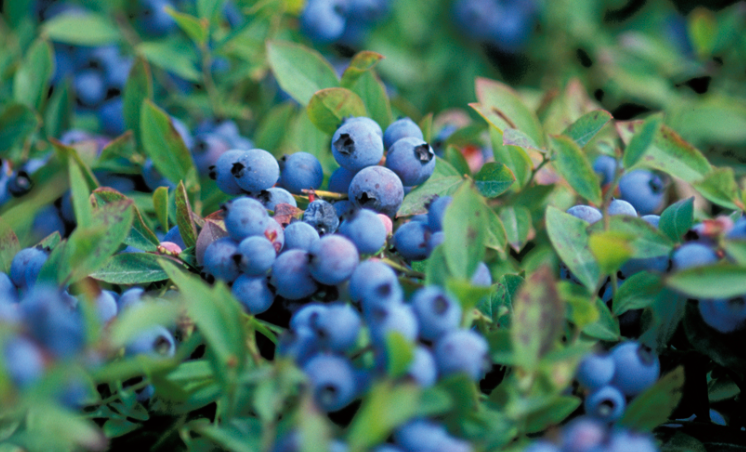Quite Contrary: Green Roofs Take Gardens to the Heights
At the Coastal Maine Botanical Gardens in Boothbay Harbor, you can find plenty of lowbush blueberries in surprising places, but no more surprising than on this small-scale living roof. They’ve planted these blues up high – not to keep them from enthusiastic pickers (these “burgundy” blueberries are primarily ornamental) but to put the marriage of horticulture and architecture on display.
| A “living roof ” grows lowbush blueberries at Coastal Maine Botanical Gardens in Boothbay Harbor, Maine. |
Green, or living, roofs are becoming more and more popular as ecological architects seek ways to build sustainably, and vegetation that completely covers a building’s roof benefits air quality, conserves energy, reduces stormwater runoff and helps lessen the “urban heat island effect” in cities in which traditional roofs absorb the sun’s heat during the day then radiate it back a night. Chicago has been a leader in green roofs and rooftop gardens in the U.S., and in Canada, Toronto approved a by-law in 2009 that mandated green roofs on residential and industrial buildings.
Of course, a true green roof – a roof covered mostly or completely with vegetation planted over a waterproofing membrane – differs from a rooftop garden, which consists of various container plantings on a roof or deck surface. However, some more intensive roof gardens are planted into soil that covers the roof. It’s an exciting way add beauty to an environment: planting a diversity of flowers and shrubs can add amazing color and some desired “green space” to an urban community.
We are likely to encounter fewer true green roofs in the Northeast, but they exist. In fact, students at the University of Delaware found that growing a garden on the roof of their college buildings had many advantages, and they hope their idea will take off. Plants on the roof had a cooling effect in the summer, and caused the peak temperature on the roof to occur later in the day, making classroom temperatures more comfortable and lessening the need for air conditioning.
If you are considering a roof garden, either for aesthetic, sustainable, or gastronomic reasons, choose durable plants that grow year-round and require little attention beyond occasional weeding, and be aware of safety issues associated with weight and weight distribution. While not all your edibles will work well up on the roof, things like herbs, snow peas, and greens like spinach and bok choy can thrive if your roof has a seasonal focus.
You can find out more about roof gardens at The Kitchn, and Boston.com shows you how to start your own rooftop veggie garden.

